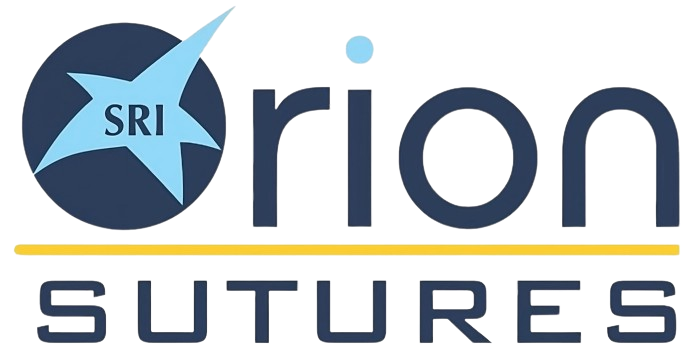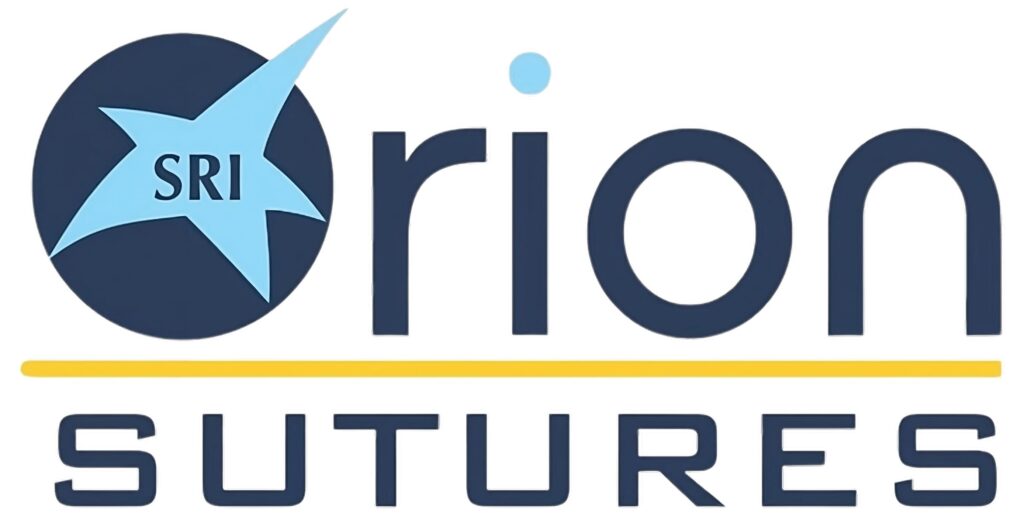Absorbable Suture Materials: Types, Benefits & Applications
Surgical sutures are vital tools in wound closure and tissue repair, with absorbable sutures playing a particularly crucial role in procedures where long-term suture presence is unnecessary. These sutures are designed to degrade naturally inside the body, eliminating the need for removal. In this blog, we’ll explore different absorbable suture materials, their characteristics, and typical applications. What Are Absorbable Sutures? Absorbable sutures are made from materials that can be broken down by the body’s natural processes over time. These are primarily used for internal tissues, where long-term support is not required and where removing sutures would be challenging. They’re either enzymatically degraded (in natural sutures like catgut) or hydrolyzed (in synthetic sutures). Types of Absorbable Suture Materials 1. Polyglycolic Acid (PGA) Synthetic braided suture Degradation time: ~60–90 days High initial tensile strength Minimal tissue reactivity Uses: General surgery, skin closure, obstetric and gynecological procedures. 2. Polyglactin 910 (Vicryl Equivalent) Braided synthetic copolymer of glycolide and lactide Degradation time: 56–70 days Excellent handling and knot security Uses: Ophthalmic surgery, gastrointestinal procedures, soft tissue approximation. 3. Poliglecaprone 25 (Monocryl Equivalent) Monofilament synthetic suture Degradation time: ~90–120 days Smooth passage through tissues, low infection risk Uses: Subcuticular closure, cosmetic skin procedures, pediatric surgeries. 4. Polydioxanone (PDS Equivalent) Monofilament synthetic suture Degradation time: ~180 days (longest-lasting absorbable suture) Maintains tensile strength over extended periods Uses: Abdominal wall closure, cardiovascular surgeries, orthopedic repairs. 5. Chromic Catgut Natural absorbable suture from sheep intestine Treated with chromic salts to slow absorption Degradation time: 90 days Uses: Gynecology, oral surgery, gastrointestinal surgery Note: Natural catgut sutures may provoke more tissue reaction compared to synthetic sutures. Benefits of Absorbable Sutures No need for suture removal Reduced patient follow-up Ideal for internal tissues Minimized risk of long-term infection or complications Smooth tissue healing process Common Applications Absorbable sutures are widely used in: Gynecology (uterus and vaginal repairs) General Surgery Orthopedic procedures Pediatric surgeries Plastic and reconstructive surgery Dental and oral surgeries Orion Sutures – Your Trusted Partner for Absorbable Suture Materials When quality and safety are paramount, Orion Sutures offers a comprehensive range of absorbable sutures, including PGA, Polyglactin 910, PDS, Chromic Catgut, and Monocryl equivalents. As a leading surgical suture manufacturer in India, Orion Sutures ensures every product meets international standards for biocompatibility, tensile strength, and absorption performance. Whether you’re a surgeon, hospital, or distributor, Orion Sutures delivers trusted solutions for surgical excellence. Conclusion Absorbable sutures are essential in modern surgery, offering efficient tissue support and natural absorption. Understanding the properties of each material helps surgeons select the most appropriate option for specific procedures. For reliable, certified, and precision-engineered absorbable sutures, turn to Orion Sutures — where healing begins with quality.
Absorbable Suture Materials: Types, Benefits & Applications Leer entrada »


